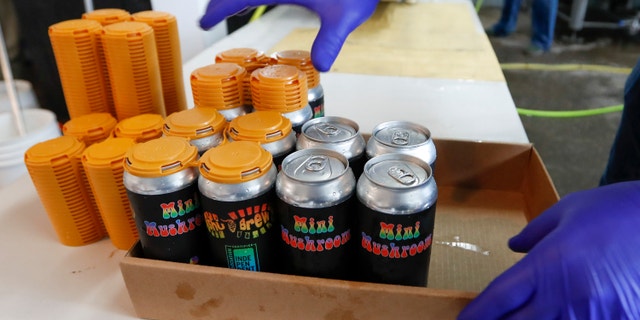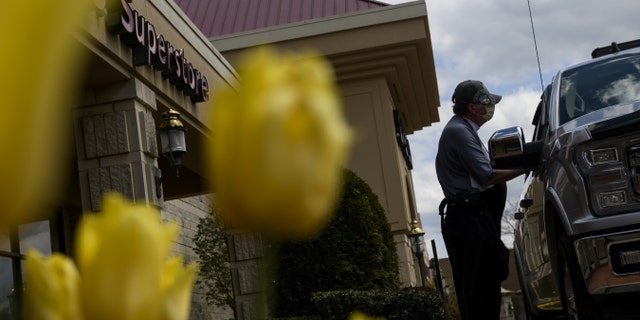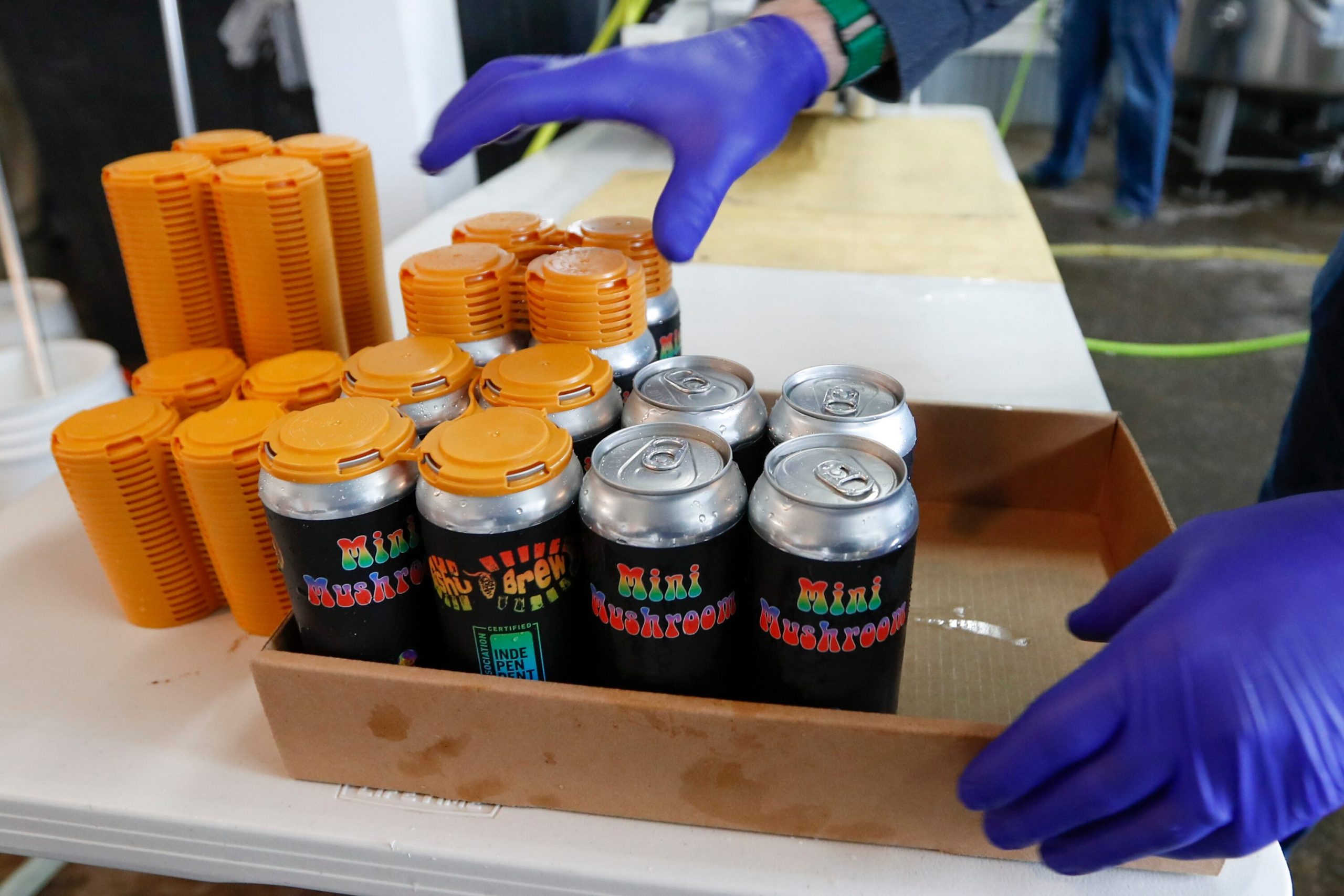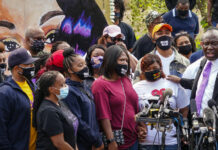Get all the latest news on coronavirus and more delivered daily to your inbox. Sign up here.
State-owned liquor stores in Pennsylvania have fulfilled about 25,000 orders for curbside pickup in the first three days since the program began amid the coronavirus pandemic, for sales of about $2.3 million.
The Pennsylvania Liquor Control Board (PLCB) opened the sale at 176 of its stores on Monday and booze has flown off of store shelves ever since, The Philadelphia Inquirer and Pittsburgh Tribune-Review reported. Roughly 6,000 orders were fulfilled on the first day alone.
Now, the board is expanding curbside pickup program to hundreds more of its Fine Wine & Good Spirits stores, starting on April 27.

A worker puts four-pack covers on canned beers after they came off the filling conveyor at the ShuBrew craft brewery in Harmony, Pa on April 16. After the state liquor control board closed the Pennsylvania state-owned stores that retail nearly all of the state’s liquor in March, the small microbrewery business pulled an all-nighter to retool its website and operations and went to online ordering and curbside pickup for patrons at their Zelienople, Pa. restaurant. (AP Photo/Keith Srakocic)
MUNICH’S OKTOBERFEST CELEBRATIONS CANCELED AMID CORONAVIRUS PANDEMIC: ‘THE RISK IS JUST TOO HIGH’
“Beginning Monday, we’ll have 565 Fine Wine & Good Spirits stores across Pennsylvania accepting orders by phone for curbside pickup,” PLCB Chairman Tim Holden announced on Friday.
“We acknowledge that Pennsylvanians are frustrated with busy signals and want broader access to wine and spirits. So, after learning from our experiences this past week, we’ve made improvements to process orders faster, expand the hours we take orders by phone, and be more flexible in scheduling pickups, even the same day, if pickup appointments are available.”

A worker delivers alcohol to a customer for curbside pickup outside a state liquor store in Fox Chapel, Pa. on April 21. (Michael Swensen/Bloomberg via Getty Images)
In March, all of the Pennsylvania LCB stores were closed amid the global COVID-19 health crisis. Though the board had previously launched online sales for home delivery orders, overwhelming demand led officials to randomize site access and ultimately begin the curbside pickup program.
If you’re in the market for libations in the Keystone State, coordinating a curbside pickup order is relatively straightforward.
FOLLOW US ON FACEBOOK FOR MORE FOX LIFESTYLE NEWS
Shoppers should call their nearest open liquor store any time after 9 a.m. on Monday through Saturday, and a “limited number” of orders will be filled on a first-call, first-serve basis. When placing the order, customers should have their credit card ready, as it’s the only accepted form of payment.
Customers can then schedule a pickup time, with curbside pickup orders restricted to six bottles per order. Orders are also limited to “one order per caller, per store, per day,” the PLCB states, and all curbside pickup sales will be final.
Before the coronavirus shutdown, Pennsylvania’s liquor stores handled about 180,000 transactions a day, the Associated Press reports.
CLICK HERE FOR FOX NEWS’ CONTINUING CORONAVIRUS COVERAGE
The Associated Press contributed to this report.






